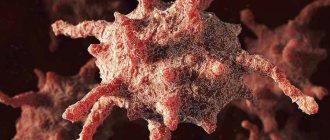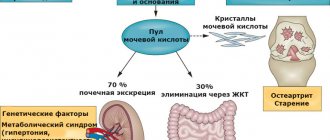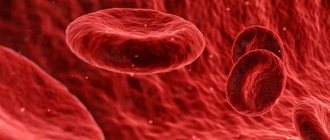How to increase platelets in the blood during pregnancy?
To answer the question of how to increase platelets in the blood of pregnant women, you need to consider the broader picture. The form of thrombocytopenia is important here. It is worth starting from this when prescribing drug therapy.
- If the expectant mother falls ill with viral diseases, there is no need to fuss. And the answer to what to do is simple: treat the viral infection. Once the condition improves, platelets will normalize on their own.
- When increased platelet levels are caused by taking pharmaceuticals, stop using them.
- If the essence of the problem is the failure of the normal functioning of the kidneys, liver and thyroid gland, all efforts must be directed towards eliminating them.
- Insufficient amounts of vitamins and minerals can also cause thrombocytopenia. Dietary nutrition, a balanced and complete menu is a solution to problems. It is better to exclude smoked and canned foods containing citric acid or vinegar from the diet. For pregnant women, the following are recommended in large quantities:
- fresh vegetables, berries and fruits, which will fill the female body with the right amount of minerals and vitamins of all groups,
- if you lack iron, you need to eat eggs, beans and mushrooms,
- to compensate for the lack of vitamin B12, pay attention to liver, meat and fish, especially sea fish,
- Folic acid is found in large quantities in greens (parsley, dill) and nuts.
- If the autoimmune nature of the pathology is observed, which involves the production of antibodies that destroy blood plates, the course of therapy consists of the following:
- Corticosteroid pharmaceuticals.
- Stick to a special diet menu.
- Do not forget about the appointment of angioprotectors and immunoglobulins.
- If drug therapy does not bring improvement, it is worth resorting to more radical treatment. Blood transfusion must be provided. This method may be required if the above drugs are contraindicated for a pregnant woman due to individual intolerance.
Thrombocytopenia is a dangerous disease, especially when it comes to an expectant mother. Therefore, the symptoms of pathology require mandatory examination by a doctor. Do not neglect your health and the life of the baby in the womb. At an appointment with a hematologist and after passing the necessary tests, if the diagnosis is confirmed, it is important to follow the specialist’s instructions.
Most often, the course of treatment is not aimed at increasing the production of blood platelets in the blood, but at eliminating the underlying cause of the disease. There is no need to be afraid that the prescribed medications will harm the baby. All medications are absolutely harmless to your child. Here it’s the other way around; if you don’t take them, there will be a serious risk of losing your child during childbirth.
What foods to avoid if you have thrombocytopenia:
- citrus fruits: orange, tangerine, lemon and grapefruit,
- smoked meats,
- canned foods that contain vinegar or citric acid.
If a pregnant woman does not follow the recommendations of her doctor or does not take prescribed medications seriously, serious consequences are possible.
- Hypoxia, which involves low oxygen levels in the blood.
- The child may be developmentally delayed.
- Once labor begins, bleeding may develop, which will be difficult to stop. Donated blood may be needed because the mother is losing a lot of blood. Bleeding sometimes occurs in the postpartum period.
- Miscarriage or premature birth. Babies in this case rarely survive. They are weak and cannot get out on their own.
The indicator is normal
The platelet count in a pregnant woman is an important indicator that should always be monitored. It may decrease during pregnancy due to an increase in blood volume and the formation of a placental circle of blood flow. The average volume considered normal in pregnant women is about 140-340 thousand/mcL.
This number depends on when you became pregnant. The normal platelet count in the blood is:
- I trimester - 170-340 thousand / microliter;
- Second trimester - 160-330;
- 2nd trimester - 160-330; III trimester - 140-320.
After childbirth, a woman's body undergoes some changes, the main purpose of which is to reduce blood loss. This is due to increased blood clotting. After the end of the postpartum period, all indicators return to normal.
Low platelets during pregnancy
A condition in which the platelet count is below acceptable values is referred to as thrombocytopenia. This condition is pathological and requires immediate medical attention.
Main reasons:
- disruption of the process of normal blood clotting;
- pathologies of the urinary system, in particular – damage to the glomerular apparatus of the kidneys;
- hereditary coagulopathies;
- thrombocytopenic purpura;
- DIC syndrome;
- bone marrow damage;
- megaloblastic anemia;
- congestive forms of heart failure;
- manifestation of systemic lupus erythematosus;
- infectious infection, often of a viral nature;
- autoimmune pathologies;
- lack of vitamins, as well as macro- and microelements;
- taking medications that affect platelet levels. These include any antitumor drugs, some types of analgesics, antiviral, antibacterial, cardiovascular and psychotropic drugs.
Therefore, it is important to inform the laboratory employee about the medications you are taking when donating blood for analysis.
Symptoms of low platelets
It is important for pregnant women to undergo all routine examinations with a doctor and undergo laboratory tests on time. However, when the first symptoms of thrombocytopenia appear, the study should be performed immediately. Symptoms:
- bruises form on the skin even with light exposure;
- the patient is often bothered by bleeding gums and nosebleeds;
- formation of pinpoint hemorrhages on the surface of the skin;
- Small wounds and scratches bleed for a long time and do not heal.
It should be noted that platelet counts are not performed separately. Their determination is carried out as part of a clinical blood test, along with the counting of all types of leukocytes and red blood cells. If thrombocytopenia is detected during pregnancy, the patient is prescribed additional research methods.
- What are the dangers of thrombocytopenia during pregnancy?
Rules for preparing for analysis
A pregnant woman should donate blood in the morning, strictly on an empty stomach. The minimum time interval after the last meal is 8 hours. It is allowed to drink pure and unsweetened water in unlimited quantities.
Before donating blood, you should limit physical and emotional stress for 4 hours.
Important: when interpreting the results, the doctor must take into account the patient’s pregnancy, since normal values differ significantly. It is unacceptable to make a diagnosis and select treatment methods based on one analysis or studied indicator. A comprehensive examination and history taking of the patient should be carried out.
Description of cells
Platelets are very thin discs that help blood clot. Their peculiarity is the ability to stick together when a cut or wound forms.
As a result of this process, clots are formed that block the blood vessels and prevent large amounts of blood from leaking out. Against this background, a crust appears on the surface of the skin. If it is removed, bleeding may resume.
In addition, platelets perform a protective function, protecting the body from the penetration of pathogenic bacteria and viruses.
They contribute to the formation of the immune system and are regularly updated.
The number of platelets in the blood is a temporary indicator. It is constantly changing depending on the influence of internal and external factors. For example, it changes during pregnancy and during the menstrual cycle.
Why does platelet count increase?
Thrombocytosis can occur due to:
- prolonged toxicosis, complicated by attacks of nausea and vomiting,
- indigestion accompanied by loose stools,
- insufficient water consumption,
- lack of iron,
- infectious diseases (toxyplasmosis, pulmonary inflammation, infection with pathogenic microorganisms, hepatitis, viral intestinal damage),
- inflammatory processes caused by arthritis and liver diseases,
- the occurrence of malignant tumors,
- AFS.

Reasons for increase or decrease
In some cases, the number of these blood cells decreases or increases. There could be many reasons for this. The main factors for low platelet levels are:
- the occurrence of an allergic reaction;
- intrauterine fetal death;
- viral diseases;
- Poor nutrition leading to insufficient intake of vitamin B12 and folic acid;
- drug poisoning;
- long-term use of antibiotics;
- obstetric hemorrhage, for example caused by placental abruption;
- autoimmune thrombocytopenia;
- neuropathic diseases;
- increased death of red blood cells due to hormonal imbalances.
In some cases, low levels of these cells can be observed under the influence of physiological factors. In this case, no special treatment is required. However, it is important to keep track of all times. For this purpose, blood tests are carried out regularly.
There is also a secondary form of the pathological condition, in which there is a decrease in the number of platelets. In this case, the cause may be radiation or toxic poisoning.
Factors that contribute to the appearance of an increased platelet count include:
- cardiovascular abnormalities;
- predisposition to thrombosis;
- phlebeurysm;
- allergic reactions;
- lack of iron in the body;
- formation of malignant neoplasms;
- taking certain medications;
- infectious diseases;
- pathologies of the autoimmune system;
- increased toxicity in early pregnancy.
Sometimes a high cell count occurs when there is no fluid in the body.
Symptoms of thrombocytopenia and thrombocytosis in pregnant women
The fact that platelets are low or high can be understood by characteristic signs. In both cases they will be the same, since the cells cease to fully perform their tasks. Symptoms of changes in their level:
- the appearance of hematomas on the skin for no reason or due to microtrauma;
- rash in the form of small bruises;
- bleeding gums not associated with stomatitis or gingivitis;
- dark stool;
- nosebleeds;
- increased duration of blood clotting with small cuts;
- dyspnea;
- numbness of the fingertips;
- headache;
- pale skin.
READ ALSO: why nosebleeds occur during pregnancy: reasons

If the level of platelets during pregnancy differs slightly from the norm, there is no need to worry - this is the body’s physiological reaction to the changes occurring in it. In case of severe alarming symptoms or suspicion of a disease, the gynecologist will order a blood test and give a referral to a hematologist.
Symptoms
Although the diagnosis is made solely on the basis of test results, in most cases an abnormality can be suspected by the appearance of certain symptoms.
If your platelets have dropped, you may experience symptoms such as:
- The formation of bruises on the body, which can be provoked even by a light blow to the skin;
- small rashes;
- Bleeding gums during oral hygiene procedures;
- Nose bleed;
- Poor blood clotting due to skin changes;
- Dark-colored stool;
- Bloody discharge from the genital tract.
The symptoms of an increase in the number of cells are in many ways similar to the symptoms of thrombocytopenia. This is due to the fact that, despite the various factors that provoke the development of these pathological conditions, the manifestation is common: blood cells in the vessels begin to be distributed unevenly.
To avoid negative consequences that can be dangerous for both the pregnant woman and the fetus, constant monitoring of platelet levels in the body is necessary.
Consequences of thrombocytopenia during pregnancy
Lack of competent and timely treatment of pathological platelet deficiency can lead to termination of pregnancy. In this case, the period of gestation of the child does not matter.
- High platelets with RA - why worry - Arthritis - 2021
Low platelets during pregnancy significantly increase the risk of bleeding during childbirth. In addition, the likelihood of bleeding of internal organs in a newborn baby increases. A cerebral hemorrhage poses a threat to life.
Therefore, at the stage of bearing a baby, it is important to adjust the platelet count as much as possible. The question of the need for a cesarean section is decided solely by the attending physician based on the patient’s medical history and the presence of concomitant pathologies.
Prevention
To prevent the development of thrombocytopenia in a pregnant woman, it is important to follow certain rules:
- Eliminate all factors that can negatively affect the state of the immune system;
- Before planning a pregnancy, get all the necessary vaccinations against ARVI, rubella, chickenpox and other viral infections;
- Stop taking certain medications in early pregnancy;
- Change your diet.
To prevent thrombocytosis, the following preventive measures are taken:
- maintaining an active lifestyle;
- Excluding foods that increase blood viscosity from the menu;
- Drink more fluids and food to thin your blood.
Be sure to monitor your platelet count throughout your pregnancy. This is why it is so important not to neglect regular examinations by specialists and examinations.








